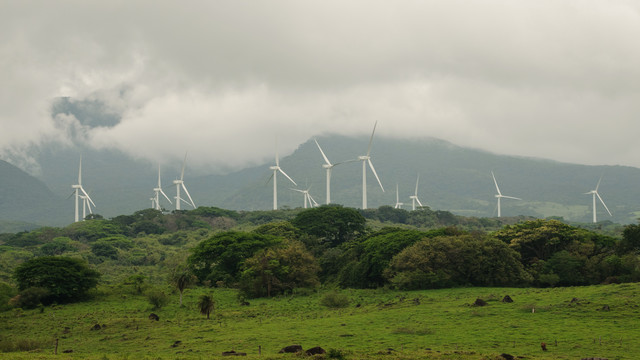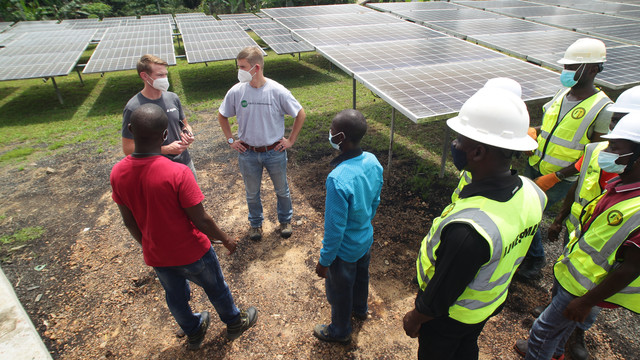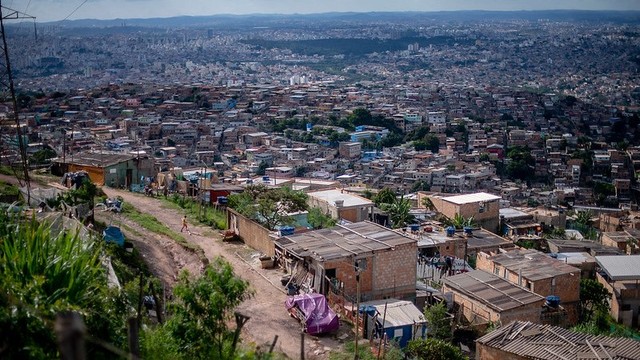Achieving transformational change for the ocean
Making progress on Sustainable Development Goal 14 – life below water – is a complex and increasingly urgent challenge. A new handbook offers practical guidance on monitoring, evaluation and learning for SDG14, and emphasises the importance of using systems thinking.



Casting a net from the beach in Sri Lanka; people around the world depend on the ocean for their livelihoods and food (Photo: Richard Evea, CC BY-SA 2.0)
The health of our ocean and seas is vital for the future of our planet: they help to regulate our climate, can provide clean energy, teem with biodiversity, support the livelihoods of billions of people and are crucial to the eradication of hunger.
But the ocean is under increasing pressure through overfishing, pollution, and other forms of environmental degradation. These mounting pressures threaten both the ocean and human wellbeing.
The Sustainable Development Goals (SDGs) emphasise the critical nature of our ocean and waterways. SDG14 – life below water – focuses on our ocean, estuaries, rivers and watersheds and the systems that intersect with them. Lots of data is already being collected and reported on our ocean and seas, typically about how they are threatened – but the complexities of the linkages between the ocean and people remain under explored.
There is a real need to use information to gain a deeper understanding, improve decision-making and take the urgent action that is required to ensure ocean and people are able to thrive.
Accelerating learning for SDG14 through monitoring, evaluation and learning
SDG14 has various sub-targets related to sustainable fisheries, marine conservation, climate change, pollution, livelihoods and policy. Monitoring often focuses on growing pressures and how ocean systems are declining – but less emphasis is placed on how we evaluate and learn about the effects of interventions and how to implement adaptive management.
Using monitoring and evaluation together is under-acknowledged and under-developed as a source of learning. This is why IIED, in conjunction with a number of partners, has co-created a Monitoring, Evaluation and Learning (MEL) Handbook for SDG14.
During the past year IIED worked with an international community of practice to develop the handbook to support transformational actions. The handbook provides information about SDG14 targets and indicators, and step-by-step guidance for those responsible for reporting on or building evidence of, progress towards SDG14 targets, including governments and practitioners.
It provides details about different sources of information and knowledge and aims to generate shortcuts for learning. It encourages lesson sharing to help different actors build on existing knowledge and accelerate action.
Linking systems thinking with systems learning and transformational action
To accompany the handbook, we have also published a policy briefing that focuses on using systems thinking for SDG14. Together, the handbook and policy briefing strongly encourage the adoption of a systems-based approach, and emphasise that working in ‘silos’ and ignoring the interactions between various systems, industries, regions and peoples will negatively impact progress toward life below water and the other SDGs.
Systems thinking encourages learning about the interactions between environmental and human systems. Complexities in ocean systems means SDG14 requires a multi-pronged approach that is ultimately cross-sectoral.
A systems-based approach requires building new partnerships, probing inter-disciplinary connections and placing a new emphasis on sharing and promoting knowledge to non-traditional actors – and to the wider public.
Communication needs to be widened and improved. This includes sharing of the growing number of examples of good practice and innovation. A number of organisations such as FAO, UNEP-WCMC, IOC, UNESCO, World Fish, and global and regional networks are already doing this.
There are already initiatives that have the potential to be transformational in their own sphere. Effective monitoring, evaluation and subsequent learning processes tied to these efforts can help to create links and accelerate awareness about successes and how challenges have been overcome.
It is essential that financiers, policymakers, strategy planners, implementers and MEL specialists adopt a holistic, integrated approach to SDG14 that aligns with the systemic nature of the ocean to minimise negative and unintended outcomes. For example, causing socio-economic losses when fishers are displaced from marine protected areas.
To deliver the transformational change needed to achieve the SDG14 goals and targets, we need a shift in thinking and practice. Appropriate MEL systems are key in ensuring such a shift occurs on a sustainable and fair basis.
The SDG14 MEL handbook is designed to inspire learning and encourage wide dissemination of good practice. We aim to update the handbook to contribute toward MEL in relation to the ocean and waterways. The co-authors welcome your feedback: to contribute your comments, please contact our team at SDG14Handbook@iied.org.




